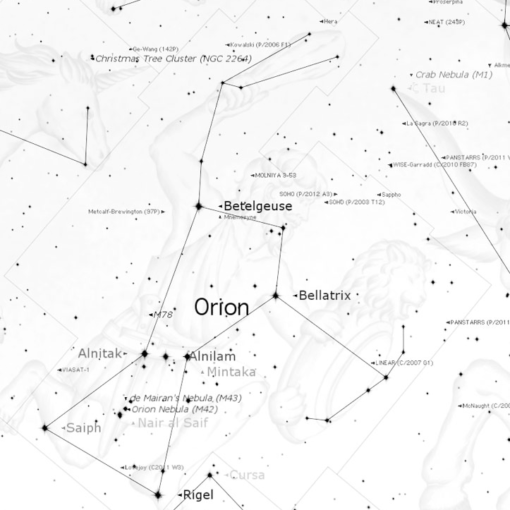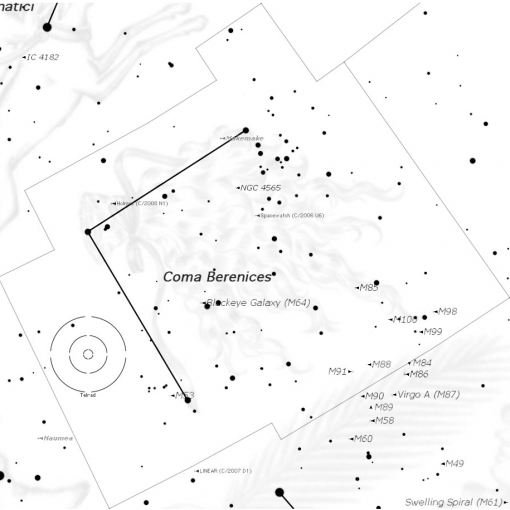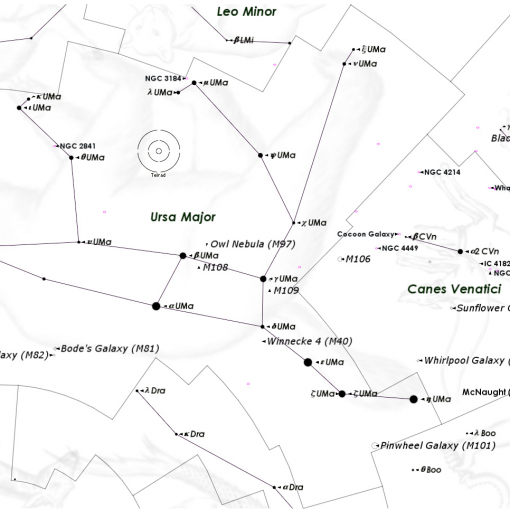The Summer Triangle is an asterism which defines the Summer Sky. The brightest of the three stars is Vega in Lyra. The other two corner stars are Deneb, the tail of Cygnus the Swan, and Altair, found in Aquila the Eagle. Lyra contains many interesting objects for small and medium scopes. The most famous objects are the Ring Nebula and the “double-double,” epsilon Lyra. The Ring Nebula, M57, is found one third of the way between beta and gamma Lyra. In small scopes, it appears as a small hazy spot. In medium scopes, its ring structure can be seen. In […]
Constellations
Orion makes his way across the Night Sky during the coldest and least hospitable (to most night time observers) months of the year. The mid-spring observing session will be the last “official” opportunity to observe Orion before he disappears behind the Western horizon until the most nocturnal of us can next see him in our Eastern sky before sunrise in late August. Betelgeuse (pronounced “Betelgeuse Betelgeuse Betelgeuse!” – marking his right shoulder; a red super giant of very orange-ish color even without binoculars) Bellatrix – the left shoulder (so you now know the Constellation is facing us as originally defined) […]
I continue to groom the Eastern sky in this month’s Constellation presentation by spending some time conditioning you to appreciate the subtle shapeliness and glowing highlights just a short clip from last month’s subject, Canes Venatici (I will endeavor to refrain from additional dry hair humor in the rest of the article). Coma Berenices, or “Berenice’s Hair,” is an unusual constellation in many respects. It is one of the few constellations that owes its name (and history) to an actual person, is one of the constellations that was promoted from a lowly asterism, it marks the location of the North […]
The spring is known as the season of the galaxies. Ursa Major, The Big Dipper, sits between Polaris, the North Star, and the Zenith. Together with Canes Venatici, just inside the handle of the dipper, there is a multitude of galaxies and other deep sky treasures. An easy and fun starter is the pair of Alcor and Mizar. This is a double star which should just be separable with the naked eye, with Mizar being the brighter of the two. In a small telescope, Mizar should be separable into two components. The end star of the Dipper’s handle is called […]




